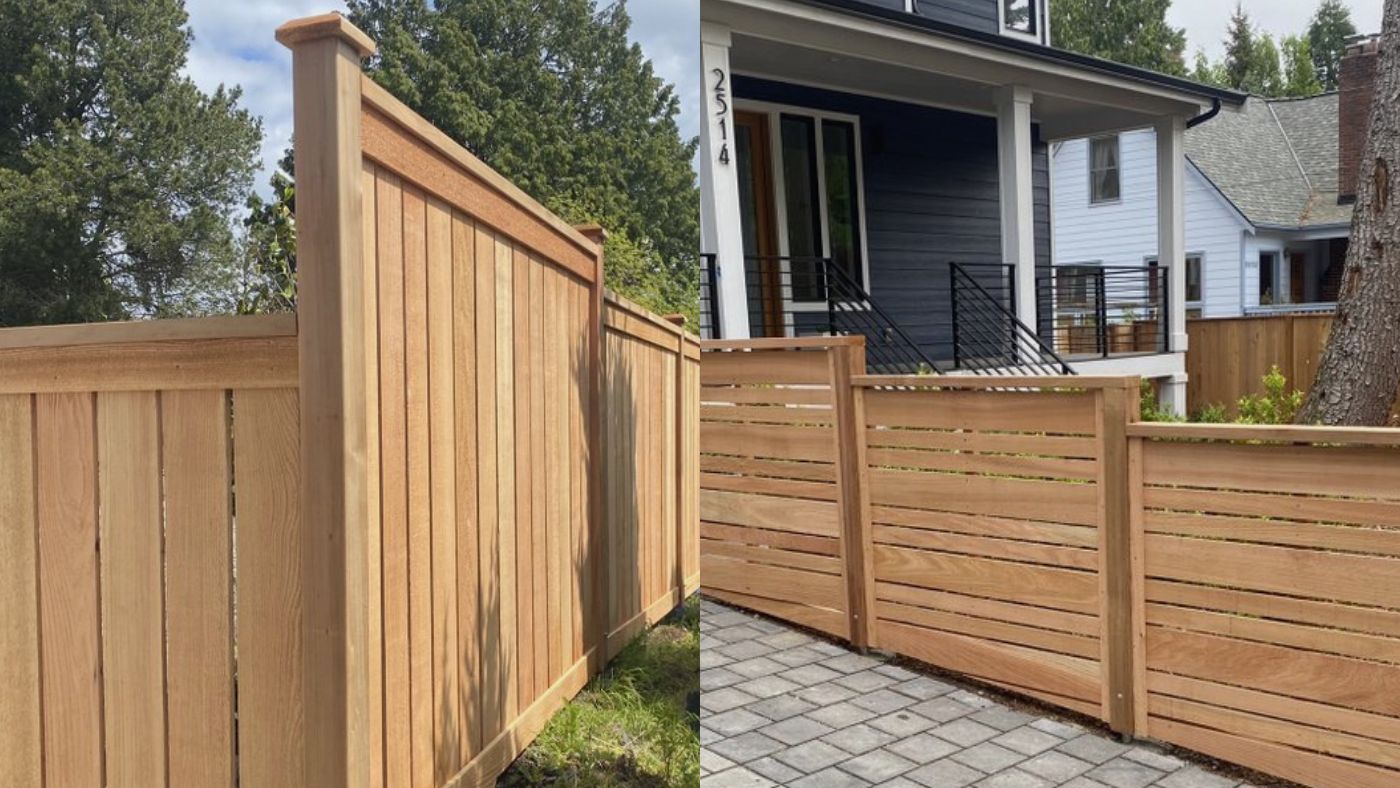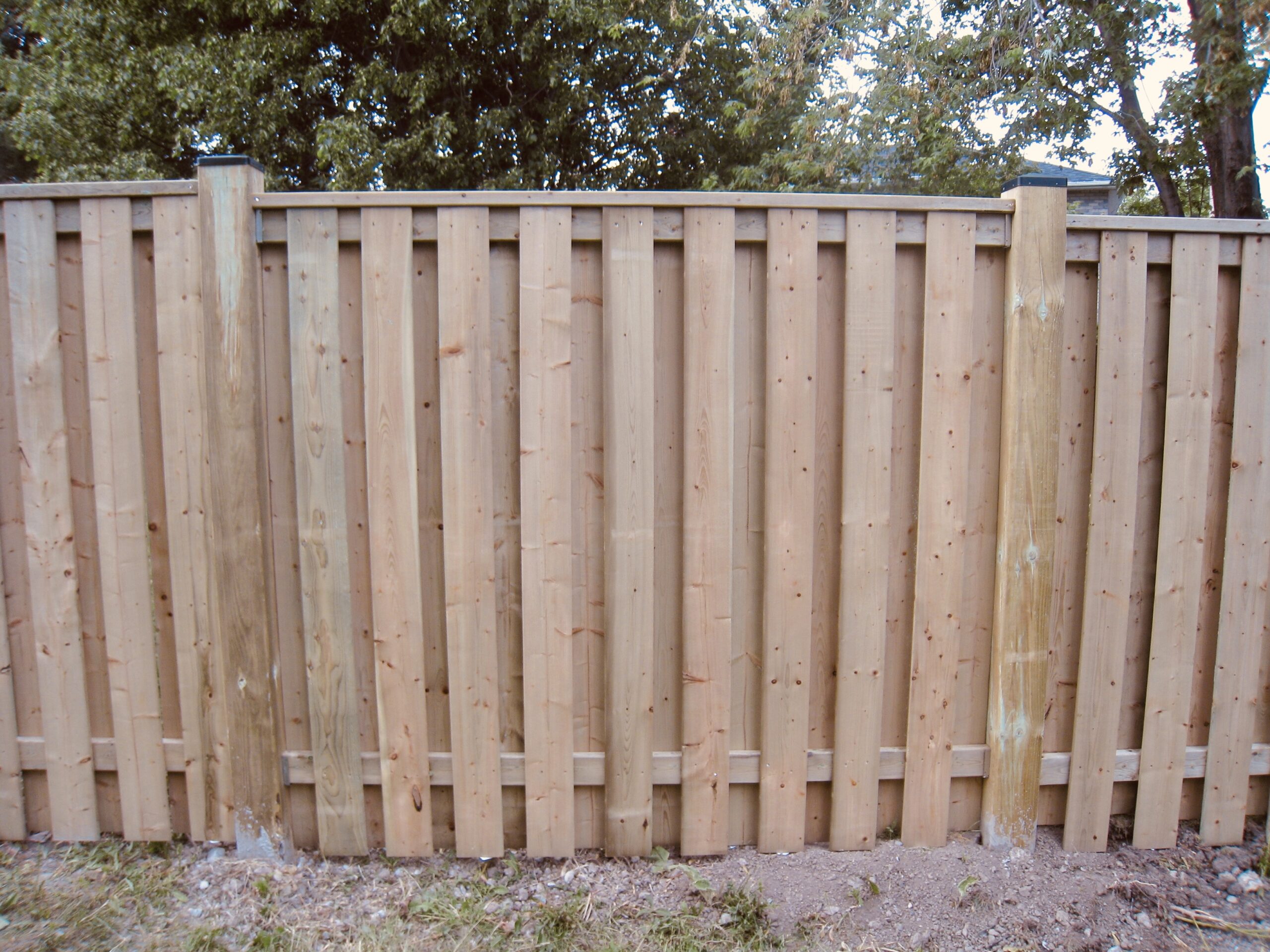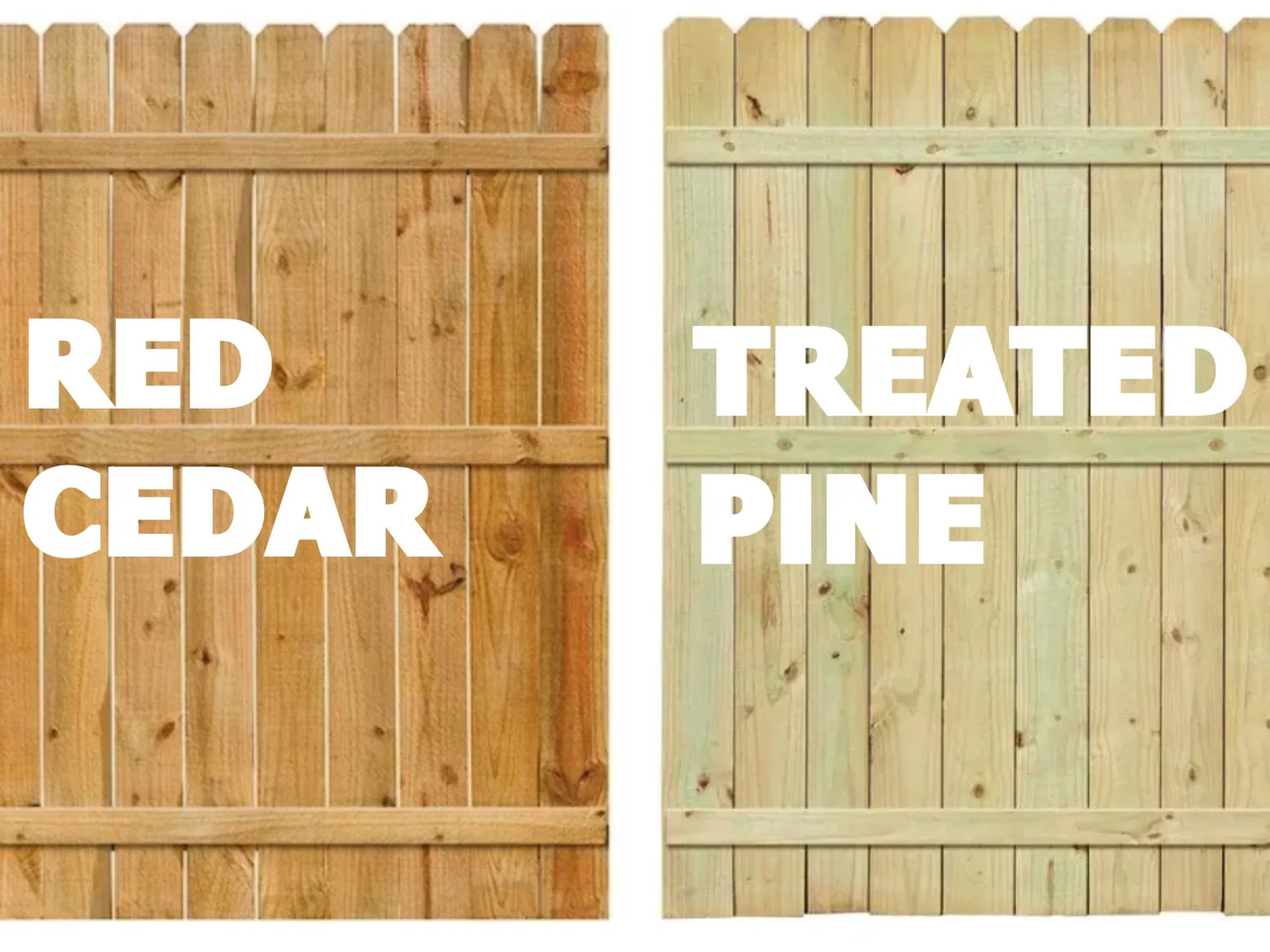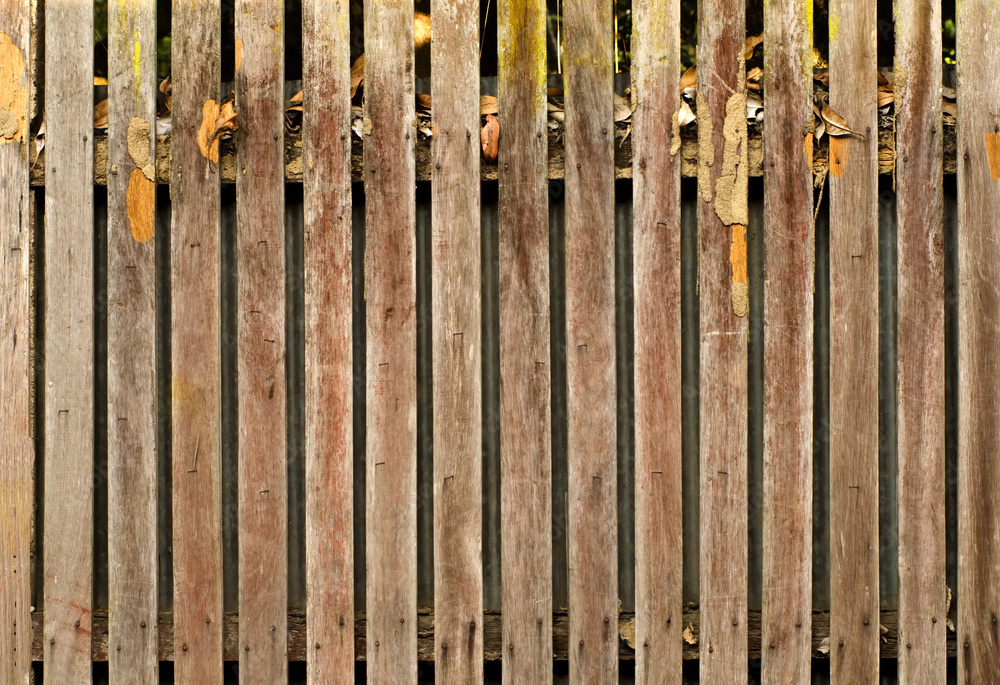
The Expert Opinion on Protective Finishes
When it comes to protecting and enhancing your wood fence, choosing between staining and painting represents one of the most important decisions you’ll make as a homeowner.
Both protective finish options offer distinct advantages for aesthetics and durability, but understanding their differences will help you select the best approach for your specific needs.
At A.D. Holmes Fence & Deck, we’ve been building and maintaining beautiful fences throughout Newmarket & Aurora, Markham, Richmond Hill, Whitby and beyond for over 20 years. During this time, we’ve seen firsthand how the right protective finish can transform both the appearance and longevity of a wood fence.
Regardless of if you’re protecting a new cedar privacy fence or restoring an older pressure-treated installation, the choice between stain and paint will significantly impact your fence’s upkeep and appearance for years to come.
Why Paint or Stain?
Before getting into the specifics of staining or painting, it’s important to understand why wood fences require protective finishes in the first place. Natural wood, while beautiful, remains vulnerable to multiple environmental threats that can compromise both its structural integrity and aesthetic appeal.
Without proper protection, even high-quality wood species like cedar will begin showing signs of deterioration within the first year of installation. Gray discoloration, surface checking, and moisture-related issues can quickly transform a beautiful fence into an eyesore that detracts from your property’s curb appeal.
Both staining and painting provide essential barriers against these environmental challenges. However, they accomplish this protection through fundamentally different approaches. Understanding these differences will help you decide which option is best for you and your situation.
How Staining Protects Wood
Wood stains work by penetrating deep into the wood fibers, creating protection from within the material itself. Unlike surface coatings that form a barrier on top of the wood, stains are absorbed into the cellular structure, where they provide UV protection, water resistance, and enhanced durability.
How Stains Protect Wood:
- Deep penetration reaches up to several millimeters into wood fibers
- UV-blocking pigments prevent photodegradation of lignin
- Water repellents reduce moisture absorption without completely sealing the wood
- Fungal inhibitors prevent mold and mildew growth
- Natural breathing allows moisture vapor to escape, preventing trapped moisture issues
This approach offers several advantages. Because stains become part of the wood itself rather than sitting on top, they don’t peel, crack, or flake off like paint can. Instead, stains fade gradually and evenly over time, maintaining a more attractive appearance even as they reach the end of their protective life cycle.
The transparency levels available in wood stains range from completely clear protective sealers to solid-color stains that provide nearly opaque coverage.
Semi-transparent stains represent the most popular choice, offering excellent protection while still showcasing the natural wood grain and texture that makes wood fencing so appealing.
Stain Durability and Longevity:
Quality wood stains typically provide effective protection for 2 to 5 years, depending on several factors:
- Stain quality and formulation – Premium oil-based stains generally last longer than water-based alternatives
- Wood species and condition – Dense woods like cedar accept stain differently than softer pine
- Environmental exposure – South-facing fences receive more UV damage than shaded installations
- Climate conditions – Areas with harsh winters or intense summer sun require more frequent maintenance
- Application quality – Proper surface preparation and application technique significantly impact longevity
Paint Pros and Cons
Paint creates protection through an entirely different mechanism than stain. Rather than penetrating the wood, paint forms a protective film or barrier on the wood’s surface. This film blocks moisture, UV radiation, and other environmental threats from reaching the wood underneath.
How Paint Protects Wood:
- Surface barrier formation creates a continuous protective film
- Complete UV blocking prevents any light penetration to the wood
- Moisture exclusion when properly applied with primer
- Color retention maintains consistent appearance longer than stain
- Hide imperfections covers knots, stains, and minor surface defects
Paint’s protective approach offers distinct advantages, particularly in terms of maximum protection and color options. A high-quality paint system, when applied over proper primer, can provide superior moisture protection compared to most stains. This makes paint an excellent choice for fences exposed to severe weather conditions or in areas where maximum protection takes priority over natural wood appearance.
Modern exterior paints designed specifically for wood fencing offer impressive durability, with quality systems lasting 3 to 8 years between maintenance cycles. However, this longevity depends heavily on proper application and ongoing maintenance to address any cracking, peeling, or moisture infiltration that may occur.
Aesthetic Choices
Of course, the visual differences between stain and paint are readily apparent at a glance. Depending on the rest of your yard or even your home, there may be an obvious choice, but if you’re on the fence about whether to paint or stain, you might consider the following.
Stain Aesthetics:
Wood stains excel at enhancing and preserving the natural beauty that makes wood fencing so appealing. The penetrating nature of stains allows the underlying wood grain, texture, and natural character to remain visible while adding color and protection.
Stain colors typically follow natural wood tones, ranging from clear protective finishes to rich browns, deep reds, and weathered grays.
While color options are more limited than paint, modern stain formulations offer an impressive range of attractive choices that complement various architectural styles and landscape designs.
Paint Aesthetics:
Paint offers unlimited color possibilities and the ability to create bold design statements that simply aren’t possible with wood stains. The opaque coverage completely transforms the fence’s appearance, making it a prominent architectural element rather than a natural backdrop.
Paint excels in situations where the fence serves as a design element in its own right. White picket fences, colorful privacy installations, and fences designed to match specific architectural themes all benefit from paint’s design flexibility and uniform appearance.
Durability and Maintenance
The long-term performance of either stain or paint can feel difficult to calculate. It can be complicated by the wood used, the location of the fence itself, and what conditions it must withstand in addition to the quality of the stain or paint itself, not to mention the competency of application. Understanding these factors helps predict maintenance requirements and total cost of ownership.
When stains reach the end of their protective life, the renewal process remains relatively straightforward. A thorough cleaning, light sanding of any rough areas, and fresh stain application typically restore full protection and appearance.
This simplicity makes stain maintenance more accessible for do-it-yourself homeowners.
Paint maintenance becomes more complex when the protective film begins failing. Cracking, peeling, or bubbling paint must be completely removed before new paint application, often requiring professional equipment and expertise.
However, when properly maintained, paint systems can provide longer intervals between major maintenance cycles.
Effects of Canadian Weather on Fencing
The Canadian climate presents unique challenges for wood fence protection, with harsh winters, intense summer UV exposure, and significant seasonal temperature swings. These conditions influence the performance of both stain and paint protective systems.
Winter Weather Impact:
- Freeze-thaw cycles stress both wood and protective finishes
- Snow and ice create prolonged moisture exposure
- Temperature extremes cause expansion and contraction
- Reduced maintenance windows limit application and repair opportunities
Stains generally handle freeze-thaw cycles better than paint because they don’t form rigid surface films that can crack under thermal stress. The penetrating protection moves with the wood as it expands and contracts, maintaining integrity throughout seasonal changes.
Summer UV Exposure:
- Intense sunlight breaks down both wood and protective finishes
- High temperatures accelerate chemical degradation
- Extended daylight hours increase total UV exposure
- Dry conditions can cause wood shrinkage and checking
Both stain and paint provide UV protection, but their effectiveness varies significantly. Quality stains with UV-blocking pigments offer excellent protection while maintaining natural appearance. Paint provides complete UV blocking but may show heat-related stress in extreme temperatures.
On Installation
The success of any protective finish depends heavily on proper application technique and timing. Both stain and paint require specific conditions and preparation methods to achieve optimal performance and longevity.
New fences typically require a curing period before applying protective finishes.
Pressure-treated lumber needs 2-4 months of weathering to allow chemical treatments to stabilize and moisture content to normalize. Cedar fences may be ready for protection sooner but benefit from some initial weathering.
Upfront Cost VS Long Term Maintenance
The financial comparison between staining and painting involves both immediate costs and long-term maintenance expenses. A comprehensive cost analysis must consider material prices, application costs, maintenance frequency, and expected service life.
Quality stains generally cost more per gallon than paint, but coverage rates and application requirements often balance the equation. Premium oil-based stains may cost 20-30% more than comparable paint products, but their superior penetration often means less product is needed for adequate protection.
Application Cost Factors:
- Labor intensity – Paint typically requires more preparation and application time
- Equipment needs – Both finishes benefit from spray application for large fences
- Weather dependency – Paint has stricter application window requirements
- Professional vs DIY – Stain application is generally more forgiving for homeowners
Long-Term Maintenance Economics:
- Stain renewal – Every 2-4 years with minimal preparation required
- Paint renewal – Every 4-7 years but may require extensive preparation
- Repair costs – Paint failures often require professional remediation
- Property value impact – Both finishes enhance property value when properly maintained
Over a 20-year period, the total cost of ownership often favors staining due to lower maintenance complexity and more predictable renewal cycles. However, paint may offer better value in situations requiring maximum protection or specific aesthetic requirements.
Making A Final Decision
The decision between staining and painting your fence ultimately depends on your specific priorities and maintenance preferences. Consider these key factors:
Choose Staining When:
- Natural wood beauty is a priority in your landscape design
- Easy maintenance appeals to your long-term planning
- Climate conditions include harsh freeze-thaw cycles
- Wood species like cedar or redwood showcase attractive grain patterns
- Budget constraints favor lower long-term maintenance costs
Choose Painting When:
- Color flexibility is important for your design vision
- Maximum protection is needed in severe exposure conditions
- Uniform appearance fits your architectural style
- Longer maintenance intervals align with your preferences
- Existing paint makes conversion to stain impractical
In Conclusion
Whether you choose staining or painting for your wood fence protection, the most important decision is to apply some form of protective finish promptly after installation or when existing protection shows signs of wear.
Both stains and paints offer significant benefits over leaving wood unprotected, and either choice will dramatically extend your fence’s service life and maintain its attractive appearance.
The natural beauty of wood fencing represents a significant investment in your property’s value and aesthetic appeal. Protecting that investment with appropriate finishing ensures you’ll enjoy years of satisfaction from your fence while maintaining the curb appeal that enhances your entire property.
At A.D. Holmes Fence & Deck, we’re committed to helping homeowners throughout Newmarket, Aurora, Markham, Whitby, and surrounding areas make informed decisions about their fencing needs. Our experience with both fence installation and long-term maintenance provides the foundation for recommendations tailored to your specific situation and goals.
Remember that the best protective finish is the one that matches your aesthetic preferences, maintenance capabilities, and performance requirements. Whether you choose the natural beauty of stain or the design flexibility of paint, proper application and regular maintenance will reward you with a beautiful, durable fence that serves your family for decades to come.








